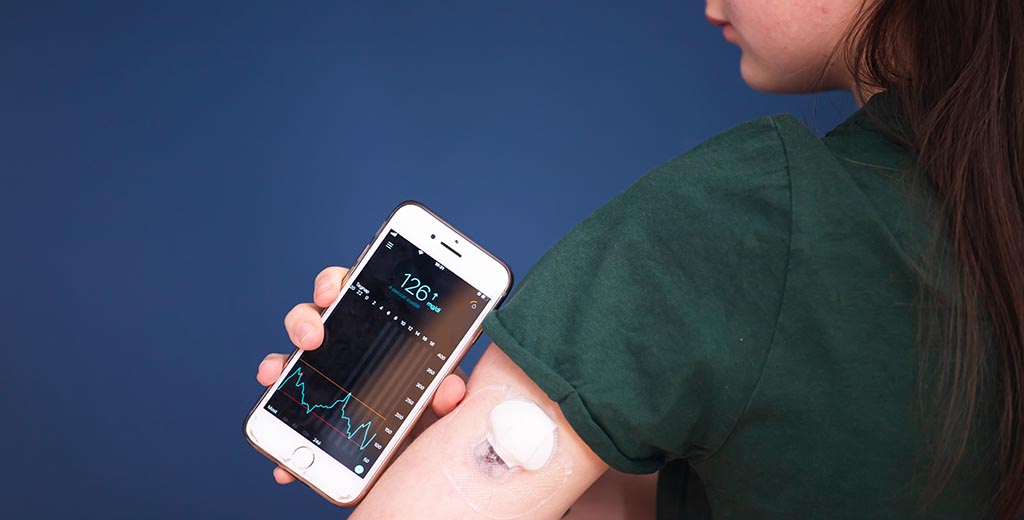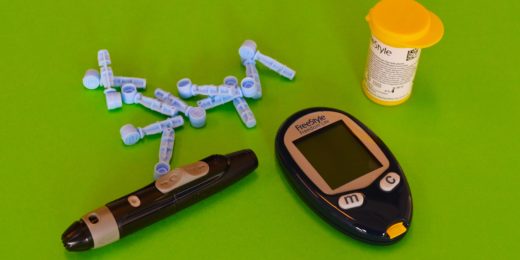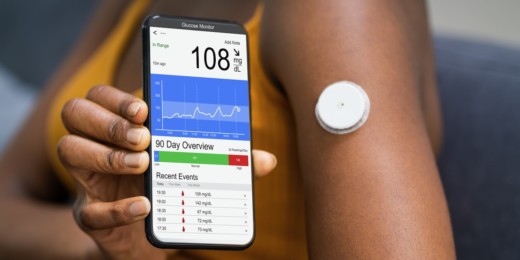Setting children and teens up with the latest treatment devices shortly after a type 1 diabetes diagnosis benefits their health a year later, a Stanford study has shown.
In the study, published recently in the Journal of Clinical Endocrinology and Metabolism, children and teens learned to use continuous glucose monitors, which automate blood sugar measurements, within a month of their diabetes diagnosis. A year later, they had healthier blood sugar levels than an earlier group of patients who weren't given the monitors near the time of diagnosis.
The findings emphasize that rapid access to diabetes technology is good for patients, the researchers said. In the past, some physicians wondered whether the technology was too overwhelming for families who were adjusting to their child's diabetes diagnosis.
"Having your child diagnosed with type 1 diabetes is a big shock for most families," said pediatric endocrinologist David Maahs, MD, senior author of the study. "All of a sudden, there's a lot we have to teach them, and a lot they have to do on a day-to-day basis to take care of their child. They don't get to take a day off."
But the research team found that, rather than being overwhelmed, parents and kids were able to adopt the technology quickly and saw benefit in using the monitors. In addition, automated monitoring allowed the medical team -- not only physicians, diabetes educators and nurses but also computer scientists, statisticians and engineers -- to quickly identify which patients were struggling managing their disease and provide extra help.
Advantages of continuous monitoring
People with type 1 diabetes don't make enough insulin, a hormone that allows sugar to move from the blood into muscle and other cells. Patients control their blood sugar with a combination of frequent blood sugar measurements, insulin injections, diet and exercise.
Before continuous glucose monitors existed, patients used handheld glucometers that required them to poke a finger and squeeze out a drop of blood several times each day. Continuous glucose monitors rely, instead, on a sensor in a thin wire that has been inserted under the patient's skin. Once every 5 minutes, the monitors send glucose data to an external device such as a smartphone.
By greatly decreasing the need for finger pricks, the monitors reduce a possible source of tension between kids and parents.
With the monitors, families can also get a more accurate sense of how the child's blood sugar responds to all sorts of everyday situations, from eating a favorite meal to playing a soccer game to coming down with a cold. Everyone also sleeps more easily because the monitor sends alerts if a child has dangerously low blood sugar in the middle of the night -- a precursor to diabetic coma.
Starting sooner works better
In the study, health outcomes for 135 children and teens diagnosed with diabetes between 2018 and 2020 were compared to 272 pediatric patients diagnosed between 2014 and 2016. Among the new cohort, 124 patients began using continuous glucose monitors within a month of diagnosis, while the remaining 11 started more than a month after diagnosis. In the earlier cohort, about half of patients eventually used the monitors, but only 1.8% began in the first month.
The study tracked levels of a type of hemoglobin (HbA1c), which indicates patients' blood sugar levels over the prior 3 months. At diagnosis, the children in the new cohort had higher HbA1c than in the historic cohort. Both groups had their lowest HbA1c levels four months after diagnosis, with gradually increasing levels after that. At 6 months and 12 months after diagnosis, the patients in the new cohort had significantly lower and healthier HbA1c levels than the earlier cohort.
When the study began, patients were encouraged to keep their HbA1c below 7.5%, a standard of care for all people with diabetes. Twelve months after diagnosis, 66% of participants in the new cohort met this goal, compared to 43% in the earlier cohort. During the study, the standard of care changed to a lower target HbA1c of less than 7%; at 12 months, 53% of patients in the new cohort met the stricter goal while only 28% in the earlier cohort did so.
Incorporating data into patient records
Partway through the study, the researchers introduced an option to have patients' blood sugar data automatically uploaded to their electronic medical records and remotely monitored by the medical team. Of the participants in the new cohort, 89 took part in remote monitoring.
"We could pull the data weekly and we created a dashboard that ranks the data, so we could see which patients most need us to reach out to provide education and guidance," Maahs said, adding that this increased the medical team's efficiency.
"If you focus your education early in the patient's experience with the disease, have a way to identify who needs help and help them early, you're going to get better results," he said. "It's a lot easier to maintain tight glucose control than to regain it after glucose values have increased."
The findings make a case for broader insurance coverage for continuous glucose monitors, the researchers said.
"Historically, if you had public health insurance, it was very hard to get access to diabetes technology," said Maahs. Prior Stanford research showed that this has created inequities between children with public and children with private insurance, with worse medical outcomes for publicly insured children.
The new study included funding to ensure that kids with public insurance would not lose their monitors because of obstacles from their insurance coverage. Study participants have been successful in continuing to receive insurance coverage since the study ended, Maahs said, adding that the researchers hope their success will motivate policy changes to ensure that, in the future, nobody who needs diabetes treatment technology faces administrative or insurance obstacles.
Image by erika8213






